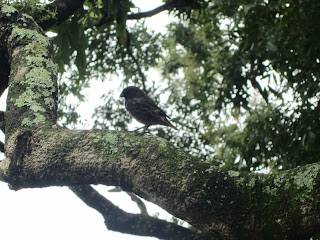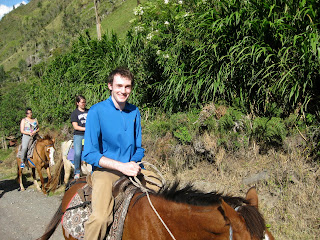I spent the last week in the Amazon Rainforest wandering through primary rainforest, rafting down a tributary of the Amazon River, and eating larvae. One of the coolest parts of the trip was the bus ride. Partway through the ride in the mountains it started snowing, at one point pretty heavily. About five hours later I was riding in a canoe through the rainforest to get to the lodge where I would be staying.
I took these two pictures when our bus stopped during out trip. I took the below picture on the left side of the bus, which shows the outskirts of the Amazon in its natural state. I took the above picture on the right side of the bus, which shows the deforestation that is quickly destroying the Amazon. Every second two football fields of rainforest are chopped down, which suggests that if nothing changes the Amazon will disappear within two generations.
The black smoke cloud is coming from a distant volcanic eruption. The town of Baños, which is a major tourist destination that I was in for my January 18 blog post, was evacuated. The eruption was located about 9 hours from where I was in the rainforest.
Me using a blowgun at a medicine man's ("curandero") house.
We spent an afternoon at the Yachana Technical High School helping the students with their chores and then playing soccer with them. There are no lawnmowers at Yachana, so the students cut the grass using machetes. This is my attempt. After I finished a student picked up my machete and after a minute had cut more than I had in fifteen.
There was an awesome lightning storm one night that went on for hours before the rain came. This is a short clip of it.
Our guide Robert making a basket out of leaves from the jungle. Robert is now twenty years old, and spent last year studying at Juniata College in Pennsylvania. He is truly an incredible person, but rather than try to describe it myself I'll direct you to:
Robert also had an essay that he wrote at Juniata read over NPR, an accomplishment which is even more impressive given that he spoke very little English when he arrived in the U.S. five months earlier:












































